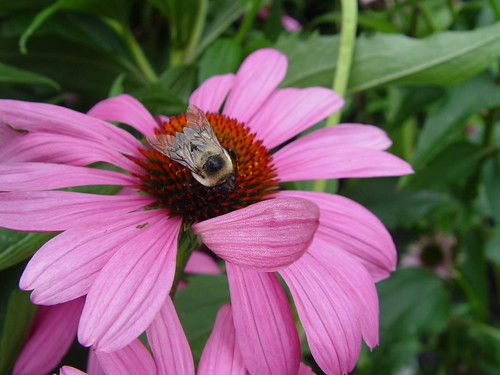Tip of the Week: Restore Habitat with Native Plants
Posted in Gardening Tips on October 25 2010, by Sonia Uyterhoeven
 |
Sonia Uyterhoeven is Gardener for Public Education. Join her each weekend for home gardening demonstrations on a variety of topics in the Home Gardening Center. |
 Last week I blogged about Doug Tallamy’s book Bringing Nature Home and the natural life cycles and interdependence among species in an ecological community. What happens when the balance of nature is disrupted?
Last week I blogged about Doug Tallamy’s book Bringing Nature Home and the natural life cycles and interdependence among species in an ecological community. What happens when the balance of nature is disrupted?
The problem usually arises when an invasive species comes in and completely overturns the equilibrium—a process in which humans are intimately involved.
Not only are we generally responsible for introducing exotic, invasive species, we also mangle the environment with construction equipment, paved roadways, big lawns (a great American monoculture), and other means that disrupt natural communities. These disturbances provide invasive species with an ideal opportunity to colonize.
The alien invaders from another continent have evolved with a different set of predators and an alternative system of checks and balances. One of the great appeals for gardeners of exotic plants is that they are fairly immune to local pest and disease problems. But it comes with a price.
Tallamy argues that “not all plants are created equal” in their ability to support wildlife. Exotic species have different leaf chemistries than their native counterparts. They often do not provide appropriate food sources to support the native wildlife.
Tallamy’s statistics are shocking. He says birds disappear on a one-to-one ratio with plant species, meaning that if 40 percent of the native plant species are lost so will 40 percent of bird species. This is enough to make you look at a native plant marked with holes from a feeding insect very differently. We generally are happy to get rid of the bugs, but do we want to do away with butterflies and birds?
Bringing Nature Home is ultimately about stewardship and responsibility. Rather than destroying natural habitats and disrupting the interconnected web of living organisms through urban sprawl, pollution, and the introduction of invasive species, we need to preserve existing natural areas and to create habitable spaces in our public parks and our own backyards.
One wildlife friendly garden or one restored habitat is not enough. For wildlife to thrive in a healthy and sustainable way we need to create a naturalistic grid across the country that will provide plants, insects, birds, and mammals with suitable habitats for their survival. Including native plants in your gardens that are specific to your local wildlife’s needs is certainly a great place to start.

